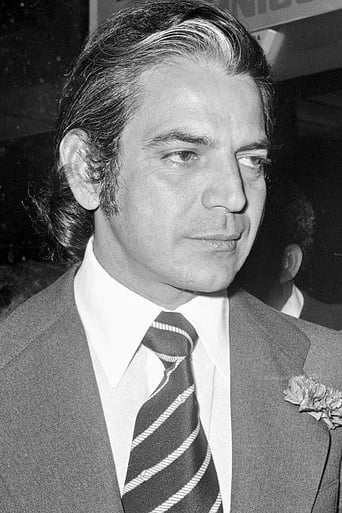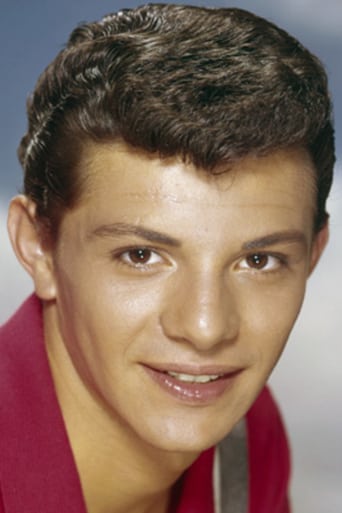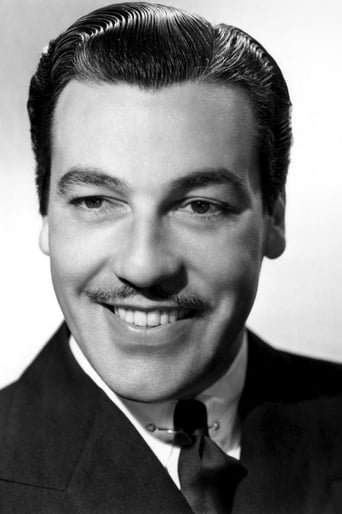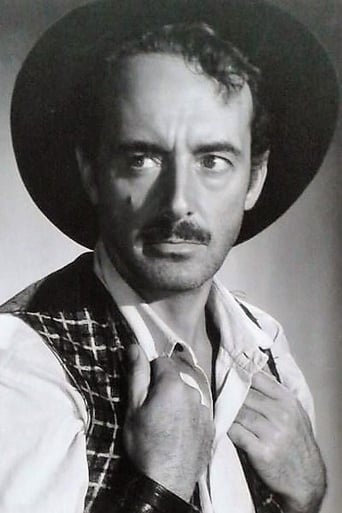MusicChat
It's complicated... I really like the directing, acting and writing but, there are issues with the way it's shot that I just can't deny. As much as I love the storytelling and the fantastic performance but, there are also certain scenes that didn't need to exist.
BallWubba
Wow! What a bizarre film! Unfortunately the few funny moments there were were quite overshadowed by it's completely weird and random vibe throughout.
Rio Hayward
All of these films share one commonality, that being a kind of emotional center that humanizes a cast of monsters.
Freeman
This film is so real. It treats its characters with so much care and sensitivity.
zardoz-13
Wooden acting undermines the spontaneity of Spanish director Javier Setó's "The Castilian," an epic account of a nobleman, Fernán González (Spartaco Santoni), who emerges from exile to unify a deeply divided Spain against its treacherous Moorish invaders. Tenth century Spain constitutes the setting for this sprawling historic peplum which was lensed on location in Spain on the actual battlefields where the bloodshed took place. After the death of his older brother, González enters the city of Lara with his long-time mentor and companion, Jerónimo, (Caesar Romero of "Donovan's Reef"), and lays claim as the rightful heir to the throne. Earlier, the future Count of Castile encountered Don Sancho's lovely daughter, Sancha (Tere Velázquez of "Stray Bullet"), as she and her contingent are riding through the countryside. Sancha admires the handsome González but prefers to have nothing to do with him until he halts the ignominious tribute of a hundred maidens to the barbarous Moors. This is the most interesting part of this two-hour plus saga. Initially, the Moors remove the hoods from a couple of prize maidens, but they realize too late that the rest of the gals are guys bristling with weapons. If the invading Moors didn't pose enough of a problem for our valiant hero, González must clash swords with one of his own countrymen, principally, the merciless King of Navarre, Don Sancho (Broderick Crawford of "All The King's Men"), who has nothing but hatred for Castilians. González kills Sancho at a pitched battle at a river. In an effort to mitigate their differences with Navarre, González has the dead on both sides interred together after their battle, and he brings Sancho's embalmed body home to his grieving family. No sooner has González delivered Sancho's body than he finds himself imprisoned by Navarre at a remote dudgeon. The love that González shares with beautiful Sancha prompts our daring heroine to engineer his escape. González desperately wants peace with both the King of León (Fernando Rey of "The French Connection") and Sancho's vengeful heir Don Garcia (Ángel del Pozo of "Catlow") so they can join forces and run Abderramán (Germán Cobos of "Reverent Colt") and his Moorish army out of Spain. "The Castilian" takes on a supernatural flavor in the last quarter hour when the two patron saints of Spain, Millán (George Rigaud) and Santiago, with flaming swords show up at our hero's side and convince Don Garcia to ride with González rather than against him. During the slightly gory battle, González's friend Jerónimo is mortally wounded. Eventually, a saddened González' watches with happiness as Jerónimo rides away alongside Millán and Santiago to be taken up into Heaven.The supporting cast is first-rate. Indeed, Caesar Romero, Broderick Crawford, and Frankie Avalon are all put to good use. Surprisingly enough, they don't appear to have been dubbed. Avalon is cast as a non-combatant minstrel named Jerifan who strums the yarn on his lute. Unfortunately, leading man Spartaco Santoni generates not so much as a modicum of charisma, while actress Tere Velázquez, appears as just listless as his queen. Luis de los Arcos and Paulino Rodrigo penned the screenplay with director Javier Setó based on the anonymous poem "Poema de Fernán González." Inferior dubbing of the principals and some lackluster battle scenes with extras milling around amateurishly don't help matters.
Bob Builder
It is not often that I come across a old historical???? film, that I haven't seen before. Until yesterday "The Castillian" was one such film. The reason for its obscurity is obvious from the start. Everything about the film is ridiculously bad. The combat and romance scenes are so terrible that they do make you laugh occasionally, when they are not making you cringe and groan. Such amusement is more than nullified however by the inappropriate theme of islamophobia, that turns history on its head.In this film the Muslims are presented as aggressive, murderers, rapists and barbarians, at a time when any historian (outside of Spain) will point out that the reverse was true. Muslim Andulsia had in fact been the most civilised culture on the planet before the time of the story. Christian Europe only slowly emerged from its Dark Ages, by acquiring the knowledge that the Andalusian Muslims had previously safeguarded from the destructive forces of Rome. The bad dubbing also grated. I couldn't find anything at all in the plot, characters or dialogue, that I liked. This film is sure to be compared with the acclaimed "El Cid". Despite sharing some of this film's major historical falsehoods and strong Christian bias, El Cid does at least not demonise all Muslims. El Cid is in fact a much better film in every way and one I enjoy watching. Frankie Avalon's next film role was entitled "Operation Bikini", which pretty much sums up what producers felt about his ability to convince in a straight acting part.
bkoganbing
The Castilian tells the story of the legend of Fernan Gonzalez who led the first successful resistance to the Moslem Moors in 10th century Spain. For the American audiences and the only actors who did not need English dubbing, Cesar Romero, Broderick Crawford, and Frankie Avalon are in the cast.I kid you not, Frankie Avalon. The then teenage idol is a minstrel who sings a few songs accompanying himself on the lute and does the narration. He does look kind of cute in his minstrel boy outfit, although voices like Orson Welles or Alexander Scourby are normally used for the role of narrator in epics. But Frankie sings real nice.The role of Fernan Gonzalez is played Espartaco Santoni who had a fairly decent career in the Spanish cinema according his list of credits here. He's was no threat to Charlton Heston though.As history and the story line of the film have it, Castile would not have been a betting man's choice as the place that would eventually take over and unite the various turfs that made up Spain. It was a small county caught between two bigger Christian kingdoms, Leon and Navarre, and to the south by the Moors. Everybody wants to be top dog.Allegedly the patron saint of Spain, the disciple James and the patron saint of Castile, Milan long dead were sighted riding in battle against the Moors. That's shown here in the film and for sincere believers it is part of the record.The film was shot at the actual battle locations, no doubt with the great cooperation of the Franco government which never missed an opportunity to emphasize Spain's Catholic tradition. On the other hand, financing was on the cheap, El Cid was done a whole lot better.
ma-cortes
This Spanish historical film is based on epic events and real characters , thus it appears : Fernan Gonzalez (923-970) , King Sancho of Navarra , King Ramiro II of Leon and Abderraman III . Movie concerns about count of Castile Fernan Gonzalez (Espartaco Santoni) who helped by his general (Cesar Romero) arranged themselves to unify and make Castile independent from the Leon Kingdom , ruled by Ramiro II (Fernando Rey and married to Alida Valli) and confronted king Sancho of Navarra (Broderick Crawford) . Fernan was imprisoned (943) but was freed later . Fernan Gonzalez , also count of Lara , broke the tribute of the one hundred maids with the Moors governed by Abderraman III (German Cobos) proclaimed caliph independent of Cordoba , granting independence of Bagdag . As the leader of the Spanish kingdom of Castile tries to get the various warring kingdoms of Spain to unite and join forces against the invading Moors . Then , the Christian kingdoms were united against the Muslim enemy and vanquished them in Simancas . Fernan Gonzalez created the county of Castile with inherited title and his successors will separate totally from Leon . Fernan Gonzalez history has been sung and written in poetry by jesters and minstrels (in the film represented by singer Frankie Avalon) .The movie results to be a biographic chronicle about a Spanish hero similar to ¨The Cid¨ (Anthony Mann) but with lack luster and budget . However , the great highlights of the film are , of course , the meticulously staged battles that convey us a spectacular scenario . The picture packs historical events , gorgeous landscapes , glimmer scenarios and battles well staged with hundreds of extras . The film was shot in authentic fortresses and strongholds as the castle of Berlanga of Duero (it appears in the sheet movie poster), castle of Gormaz and Peñafiel ; besides , in locations as Covarrubias and Soria with its monuments and churches as Santo Domingo and Saint Joan of Duero . The flick will appeal to minor epic films buffs . Rating : Better than average and entertaining .




